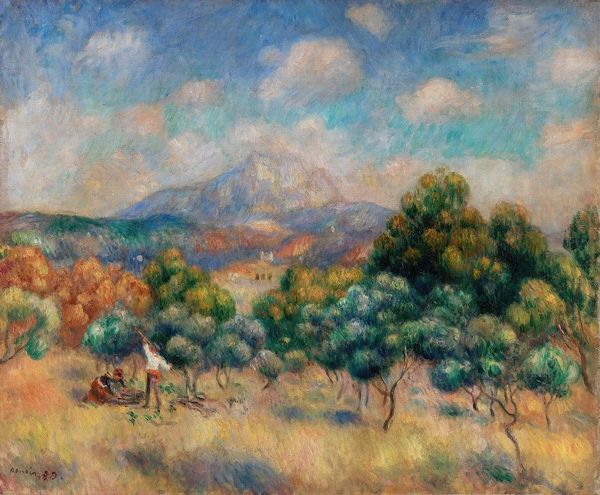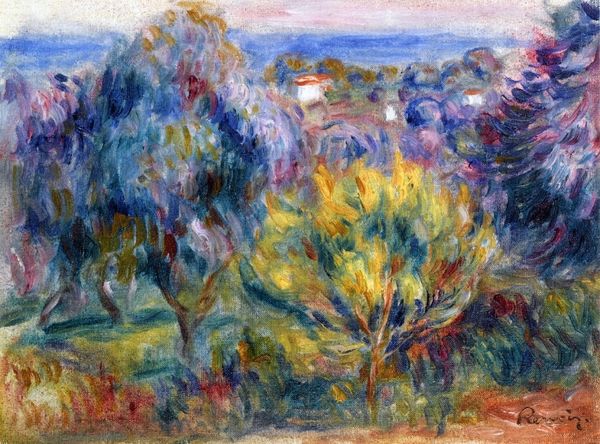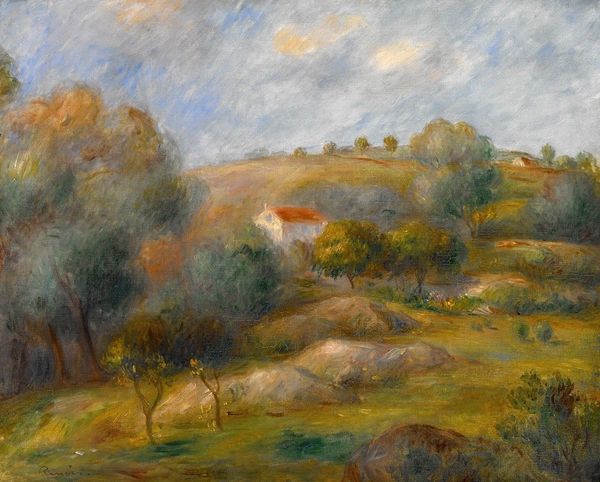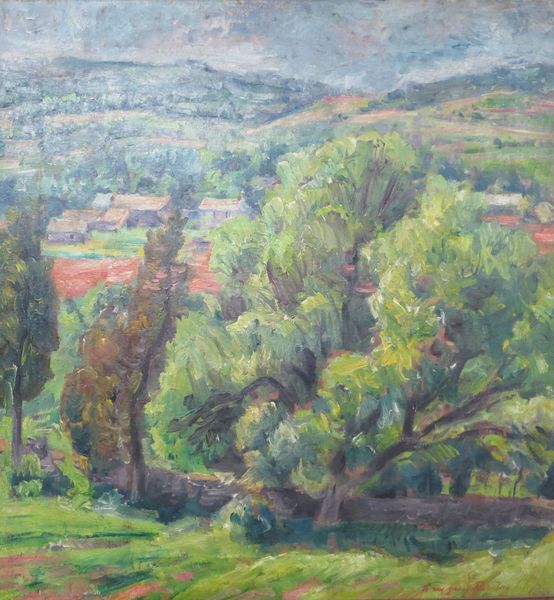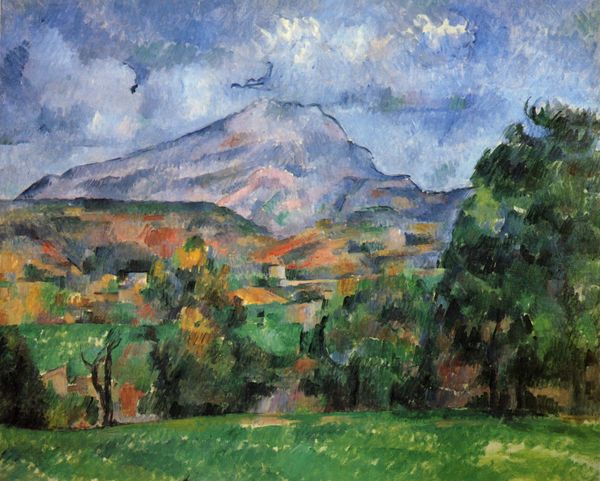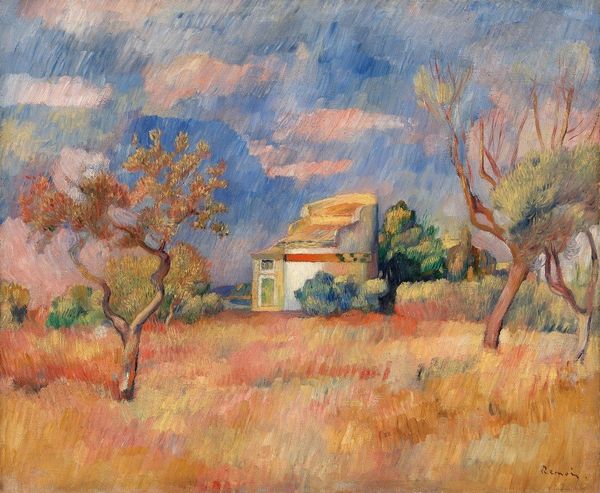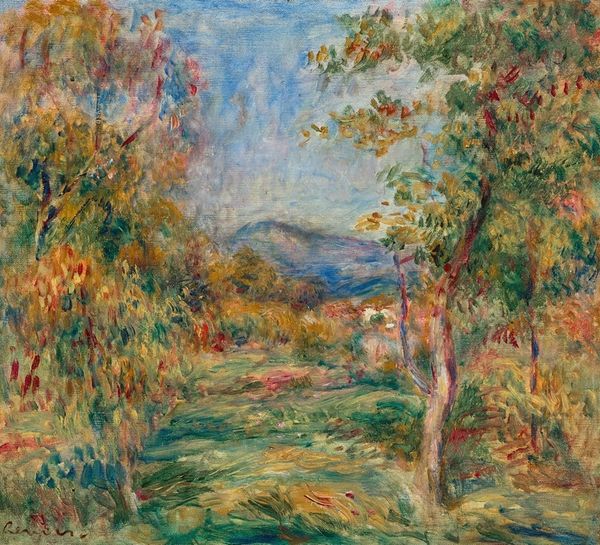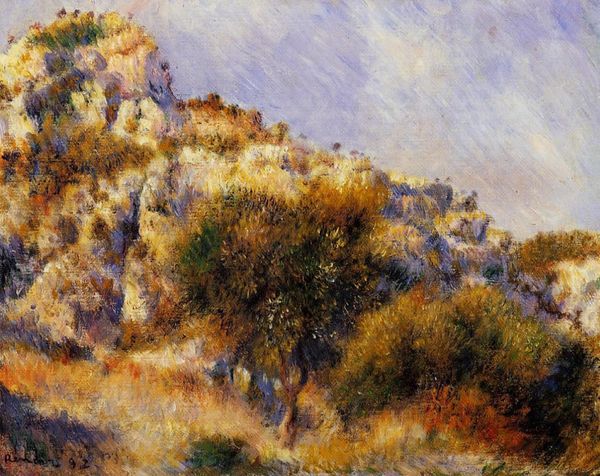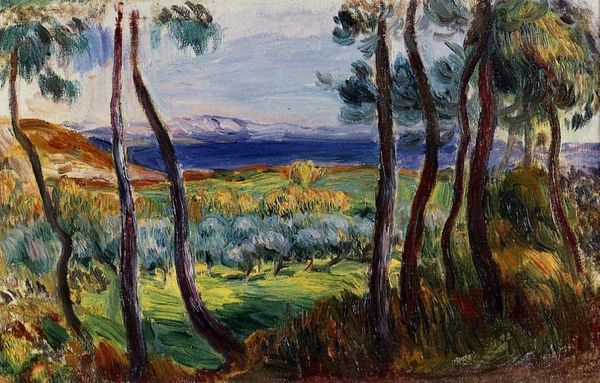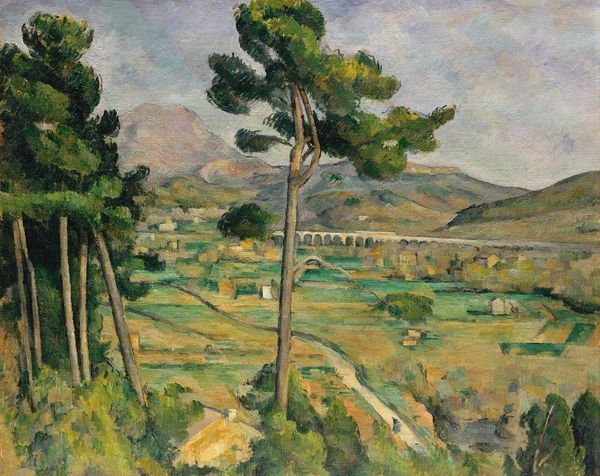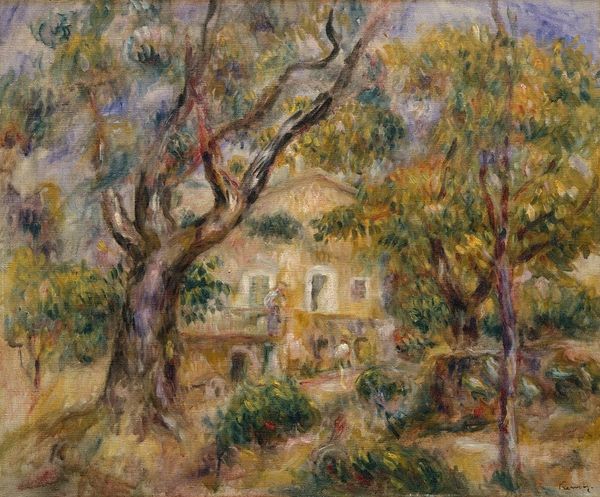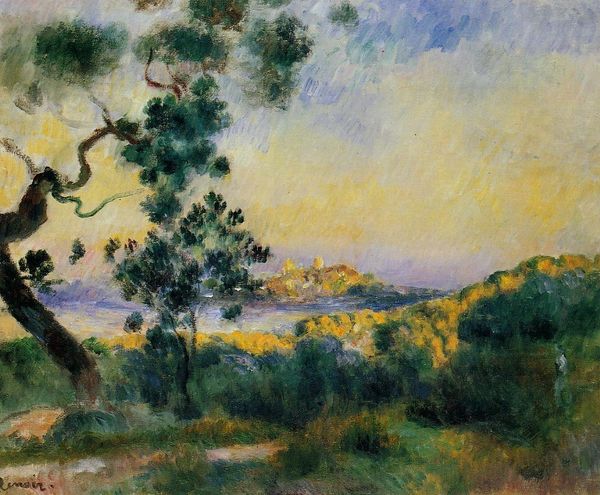
painting, plein-air, oil-paint
#
painting
#
impressionism
#
plein-air
#
oil-paint
#
landscape
#
impressionist landscape
#
oil painting
#
post-impressionism
Copyright: Public Domain: Artvee
Curator: Here we have Renoir's "Mont Sainte-Victoire," painted circa 1888-1889. He's capturing the majestic mountain in a flurry of plein-air strokes. What's your first impression? Editor: Dreamy. That's the immediate word. Dreamy, and hazy. It feels like looking at a memory, with that softened focus and feathery brushwork. How many layers do you think it took to build that sense of atmosphere? Curator: Layers and layers, I imagine! Notice how Renoir builds the scene—the wheat-colored fields almost vibrating in the foreground, the leafy trees forming a screen, and then the mountain rising distantly in the back. Editor: Right. You can practically feel the thickness of the oil paint, built up to capture that light. But let's talk materials - where was Renoir even sourcing his pigments? Were they all commercially produced at this point, or was there still some grinding involved? It really changes our understanding when we think about the labor, even in an impressionist landscape. Curator: Interesting point. There's definitely a tension between the industrial availability of paint and the handmade quality he's aiming for. It's like he’s deliberately contrasting the mass-produced materials with the very personal application. That house nestled amongst the foliage--it provides such a visual grounding, don't you think? Editor: Definitely. And it pulls our attention to the social dimension, the relationship between people and the landscape. Those are real materials shaping real lives, beyond the canvas. What do you think the context brings out most here? Curator: I think this painting makes the industrial and material foundations visible, in contrast to traditional landscapes meant only to inspire. This feels immediate, tangible. Editor: Absolutely. Thinking about those materials really grounds it. A fitting reflection of Renoir’s landscape perspective, it highlights our interaction and intersection within the natural world.
Comments
No comments
Be the first to comment and join the conversation on the ultimate creative platform.
